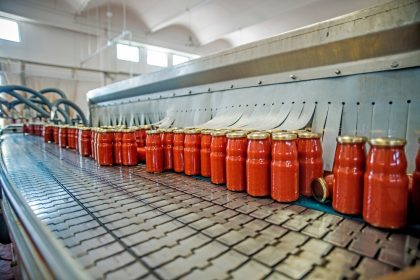A culinary revolution is quietly unfolding in American kitchens as home cooks rediscover traditional cooking fats. This shift marks a significant departure from decades of conventional wisdom about dietary fats. Recent studies have sparked renewed interest in animal-based cooking fats, particularly beef tallow, challenging long-held beliefs about their health implications.
The journey of cooking fats through human history reveals fascinating patterns in health outcomes. Archaeological evidence suggests that animal fats played a crucial role in human brain development and societal advancement. Modern food processing introduced seed oils barely a century ago, fundamentally altering our relationship with dietary fats.
Nutritional composition breakdown
- Beef tallow characteristics: Ancient cultures prized beef tallow for its remarkable stability at high temperatures. Modern analysis reveals its rich concentration of fat-soluble vitamins, particularly A, D, E and K. Research indicates that tallow from grass-fed cattle contains higher levels of omega-3 fatty acids and conjugated linoleic acid, compounds associated with various health benefits.
- Seed oil properties: Contemporary seed oils undergo extensive processing before reaching store shelves. The extraction process typically involves high heat and chemical solvents, potentially affecting their molecular structure. While these oils provide essential fatty acids, their high omega-6 content has raised concerns among nutrition researchers about potential inflammatory effects.
- Stability comparison: Laboratory testing demonstrates significant differences in how these fats respond to heat. Beef tallow maintains its molecular structure at temperatures exceeding 400 degrees Fahrenheit, while many seed oils begin breaking down at lower temperatures. This stability affects both cooking performance and potential health implications.
- Vitamin content evaluation: Nutritional analysis reveals distinct vitamin profiles between these fats. Beef tallow provides fat-soluble vitamins naturally present in animal tissues. Seed oils often require artificial fortification to achieve similar nutritional content, raising questions about bioavailability and absorption.
Health implications research
Contemporary studies challenge previous assumptions about saturated fats and heart health. Research published in major medical journals suggests a more nuanced relationship between different types of saturated fats and cardiovascular outcomes. These findings have important implications for choosing cooking fats.
Cooking performance analysis: Professional chefs increasingly acknowledge the superior cooking properties of beef tallow. Its high smoke point and ability to enhance food flavor have led to its resurrection in high-end restaurants. Meanwhile, seed oils present challenges in achieving certain culinary techniques, particularly in traditional cuisine preparations.
Environmental considerations: The environmental impact of fat production deserves careful consideration. Beef tallow, as a byproduct of meat processing, represents efficient resource utilization. Industrial seed oil production often requires extensive agricultural resources and chemical processing, raising sustainability concerns.
Economic factors: Market analysis reveals interesting patterns in cooking fat economics. While seed oils generally cost less initially, their shorter shelf life and lower heat stability may result in more frequent replacement. Beef tallow’s longer storage capability and reusability affect its long-term economic value.
Making informed choices
Selecting appropriate cooking fats requires understanding their specific applications. High-heat cooking methods benefit from stable fats like beef tallow, while some cold applications might suit certain seed oils. Personal health goals, cooking style and environmental concerns all influence optimal choices.
Proper storage significantly affects fat quality and longevity. Beef tallow remains stable at room temperature for extended periods, while seed oils require careful storage to prevent rancidity. Understanding these requirements helps maximize both safety and value.
Future research directions
Ongoing studies continue to reveal new aspects of how different cooking fats affect human health. Emerging research technologies provide deeper insights into fat metabolism and its impact on cellular function. These discoveries may further influence recommendations for optimal cooking fat choices.
Understanding the characteristics of different cooking fats enables informed decisions for various culinary applications. Temperature requirements, flavor profiles and nutritional goals all play roles in selecting appropriate fats for specific dishes and cooking methods.
















